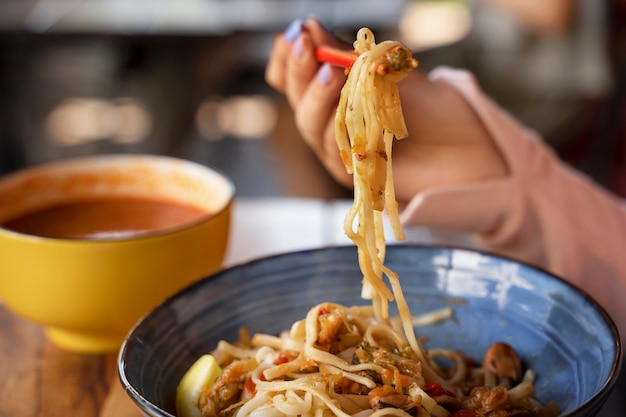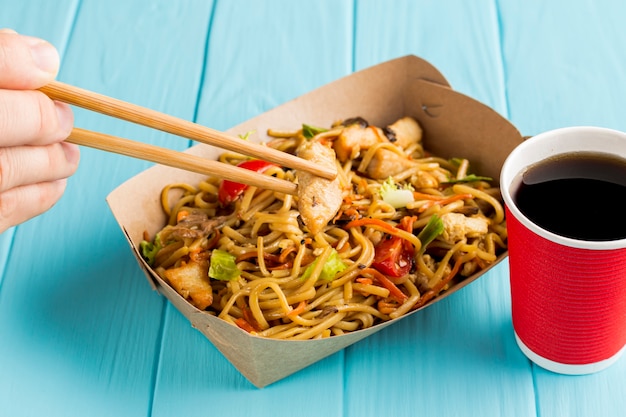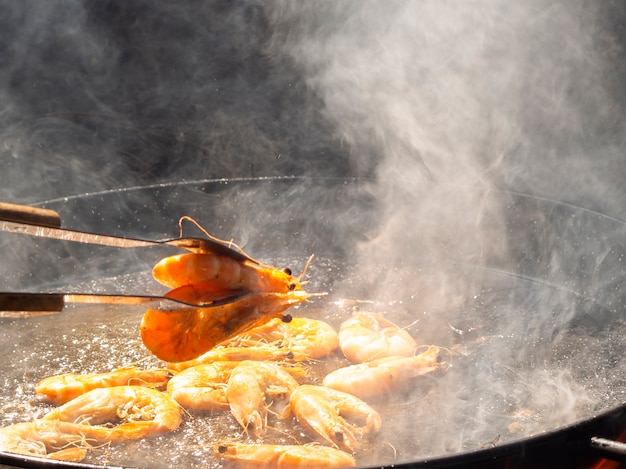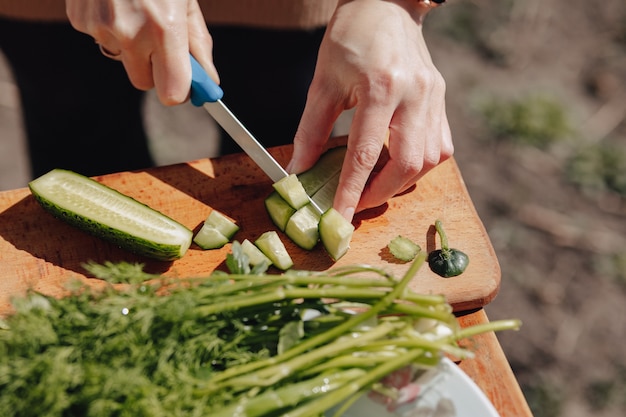Let's face it, we all have those evenings where the last thing we want to do is spend ages in the kitchen. After a long day, the thought of cooking a complicated meal can feel overwhelming. But fear not, my friends! There's a simple solution: this easy, delicious, and oh-so-satisfying chow mein recipe that’s a real weeknight lifesaver.
Now, this isn't some fancy, restaurant-quality chow mein. This is a quick and easy version that’s perfect for those nights when you’re craving a delicious, comforting meal but don't have the time or energy for something elaborate. And trust me, it’s packed with flavor and surprisingly filling. Plus, it’s incredibly versatile – you can adapt it to use whatever vegetables you have on hand, making it a fantastic way to use up leftovers.
This recipe has been a real staple in my kitchen for years. I'm a busy mum, and it’s my go-to for those nights when I'm feeling tired or just want something quick and easy. My kids absolutely love it, and it’s always a hit with friends who come over for a casual dinner. I even have a few tricks up my sleeve that I’ll share with you to make it extra special – like using homemade stock for that extra depth of flavor, and adding a little bit of spice for a real kick.
Part 1: A Personal History with Chow Mein

My love affair with chow mein started way back when I was a kid. Our family used to order takeaway from our local Chinese restaurant every Friday night – it was a real tradition. I always looked forward to the crispy noodles and the delicious, tangy sauce – it was a real treat, something I still remember fondly.
As I got older, I started experimenting with making my own chow mein. I remember the first time I tried it – I was so excited to see if I could recreate the taste of my favorite takeaway dish. It was a bit of a learning curve, but eventually, I managed to perfect a recipe that I was truly happy with.
Now, years later, I find myself making chow mein at least once a week. It’s become such a family favorite that it’s practically a tradition! And it's not just about the taste – it’s about the memories it brings back, about those Friday nights when we were all together, enjoying a simple meal.
The Inspiration: A Busy Mum's Need for Simplicity
Life as a mum is often hectic, especially when you’ve got a house full of hungry mouths to feed. I’m always looking for quick and easy recipes that are both delicious and healthy – and this chow mein recipe fits the bill perfectly. It’s versatile, affordable, and can be whipped up in just a few minutes, making it ideal for those rushed weeknights.
The beauty of this recipe lies in its simplicity. It doesn’t require any fancy ingredients or complicated techniques, which is perfect for busy parents like me. You can easily adjust the ingredients to suit your family’s preferences, and it’s a great way to get your kids involved in the kitchen – my kids love helping out, chopping vegetables and stirring the noodles.
Part 2: The Ingredients – Keeping it Simple

One of the things I love most about this recipe is how easy it is to find all the ingredients. You can usually get everything you need at your local supermarket, and it’s not expensive at all – it’s a great budget-friendly meal.
Key Ingredients
The key ingredients for my easy chow mein are:
- Noodles: I use dried egg noodles, but you can use any type of noodles you like. Just make sure they’re cooked until they’re soft but still have a bit of bite – you don’t want them to be mushy.
- Vegetables: This is where you can really get creative. I usually use a mix of vegetables, like cabbage, carrots, spring onions, and mushrooms. But feel free to use whatever you have on hand or whatever your family likes best. I love using whatever’s in season – it adds a fresh, vibrant flavor to the dish.
- Meat: I like to use chicken or pork, but you can also use beef or prawns, or leave it out completely for a vegetarian version.
- Sauce: This is the secret to a truly delicious chow mein. I use a simple combination of soy sauce, oyster sauce, and a little bit of sugar. You can also add a bit of chili sauce for extra spice, or even a dash of sesame oil for extra flavour.
That’s really it! Just a handful of basic ingredients that you likely already have in your pantry.
The Importance of Fresh Vegetables
I’m all about using fresh vegetables whenever possible. It’s not just about the flavour – it’s also about getting a good dose of vitamins and minerals. Plus, fresh vegetables just look and taste so much better! I know some people prefer to use frozen vegetables, but I find that fresh vegetables add a bit more depth of flavour to the dish.
Don’t be afraid to experiment with different vegetables. If you’re feeling adventurous, you can even add some bell peppers, broccoli, or even some water chestnuts for a bit of crunch. The possibilities are endless, really! Just use what you like and what’s available.
Part 3: The Secret Sauce

Now, I know what you’re thinking – “Chow mein sauce? How hard can it be?” Well, let me tell you, a good sauce is the key to a truly delicious chow mein. It’s what brings all the flavours together and makes the dish truly special.
I use a simple combination of soy sauce, oyster sauce, and a little bit of sugar. The soy sauce provides a salty umami flavour, the oyster sauce adds a sweet and savory depth, and the sugar balances out the saltiness. It’s a perfect blend of flavours that’s both delicious and easy to make.
If you’re feeling adventurous, you can experiment with different types of soy sauce. I’ve been known to use dark soy sauce for a richer, more intense flavour. You can also add a bit of chili sauce for extra spice, or even a dash of sesame oil for extra flavour. It's all about personal preference, really.
The Power of Homemade Stock
You know, I’ve been experimenting with using homemade chicken stock lately, and let me tell you, it makes a HUGE difference! It adds so much more depth of flavour to the dish, and it just feels so much healthier knowing I’m using natural ingredients.
It’s not as hard as you might think to make your own stock. All you need is some leftover chicken bones, a few vegetables, and a bit of water. Simmer it all together for a couple of hours, and you’ve got a delicious homemade stock that’s perfect for adding to your chow mein. Trust me, it’s worth the effort!
Part 4: Cooking the Noodles
Now, cooking the noodles is probably the easiest part of this whole recipe. But even here, there are a few tips that can make a difference.
Choosing the Right Noodles
As I said before, I usually use dried egg noodles. They’re readily available and work perfectly for this recipe. However, you can also use other types of noodles, such as rice noodles or even wheat noodles. Just make sure you cook them according to the package directions.
If you’re using dried noodles, it’s important to cook them until they’re soft but still have a bit of bite. Don’t overcook them, or they’ll become mushy.
The Secret to Perfect Noodles
One thing I’ve learned over the years is that the key to perfect noodles is to cook them in plenty of water. This ensures that they cook evenly and don’t stick together. I also add a little bit of salt to the water, which helps to season the noodles and bring out the flavour.
Once the noodles are cooked, drain them and rinse them with cold water. This will stop them from sticking together and also help to remove any excess starch.
Part 5: Stir-Frying the Vegetables
Now, this is where the magic really happens! Stir-frying the vegetables is the key to creating those delicious, crispy flavours that you love in chow mein.
Choosing the Right Pan
I always use a large wok for stir-frying, but a large frying pan will work just fine if you don’t have one. Make sure you heat the pan over a high heat before adding the oil, which helps to ensure that the vegetables cook quickly and evenly.
The Art of Stir-Frying
Stir-frying is all about quick cooking, so it’s important to work quickly and keep the vegetables moving. The goal is to get them cooked through without letting them get soggy.
Here’s the general order I follow:
- First, I add the meat to the hot pan and cook it until it’s brown on all sides. Then, I remove it from the pan and set it aside.
- Next, I add the vegetables to the pan and stir-fry them until they’re tender-crisp. I usually start with the vegetables that take the longest to cook, like carrots or broccoli, and then add the quicker-cooking vegetables, like cabbage or spring onions.
Adding the Sauce
Once the vegetables are cooked, I add the sauce to the pan and stir-fry everything together until it’s well-combined and heated through. I also add the meat back to the pan at this stage, and stir everything together to ensure everything is coated in the delicious sauce.
Part 6: Combining Everything
Now that the noodles, sauce, and vegetables are all ready, it’s time to bring everything together.
I simply add the cooked noodles to the pan with the vegetables and sauce and give everything a good stir. This ensures that the noodles are well-coated in the sauce and the flavours are evenly distributed throughout the dish.
The Finishing Touches
For a little extra flavour, I like to sprinkle a bit of sesame seeds over the top of the chow mein. You can also add a sprinkle of fresh coriander or some chopped spring onions for garnish.
Serving the Chow Mein
Serve the chow mein hot and enjoy! I usually serve it with a side of steamed rice or a simple green salad. But really, it’s delicious on its own.
Part 7: Making it Your Own
The beauty of this chow mein recipe is that it’s incredibly versatile. You can easily adapt it to suit your own taste buds and what’s in your fridge.
Spice it Up!
If you like your food spicy, you can add a bit of chili sauce to the sauce. Or, if you’re feeling really adventurous, you can even add a pinch of chili flakes to the stir-fried vegetables.
I’ve found that a little bit of spice really adds a kick to this dish, and it’s a great way to make it feel even more authentic.
Experiment with Flavors
Don’t be afraid to experiment with different flavours. You can add a tablespoon of hoisin sauce to the sauce for a sweet and savory flavour, or a splash of sesame oil for a nutty flavour.
Vegetarian Options
If you’re vegetarian, you can omit the meat altogether and add extra vegetables to the dish. You can also use tofu, tempeh, or even just a few eggs for extra protein.
Leftovers
This chow mein recipe is great for making ahead of time. The noodles and sauce can be made a day or two in advance and stored in the fridge. When you’re ready to eat, simply reheat it in a pan with a little bit of water.
Part 8: Frequently Asked Questions
FAQs
| Question | Answer |
|---|---|
| Can I use fresh noodles instead of dried? | You can certainly use fresh noodles if you prefer. Just make sure you cook them according to the package directions. Fresh noodles typically cook much faster than dried noodles, so you'll need to adjust your cooking time accordingly. You might need to reduce the cooking time by half, or even more. |
| What can I do with leftover chow mein? | Leftover chow mein is perfect for lunch the next day. You can reheat it in a pan on the stovetop or in the microwave. You can also add it to a salad for a more substantial meal – it's really delicious with a mix of greens and some chopped nuts. |
| Can I freeze chow mein? | Yes, you can freeze chow mein. However, the noodles may become a bit soggy when you defrost them. To prevent this, I recommend freezing the noodles separately from the sauce and vegetables. When you’re ready to eat, simply defrost the noodles and then stir-fry them with the sauce and vegetables. |
| Is there a way to make this recipe even faster? | If you're short on time, you can use pre-cut vegetables or frozen vegetables to save time. You can also use pre-cooked chicken or pork to make the dish even faster. |
| What are some other ways to use this chow mein recipe? | This recipe can be used as a base for many other dishes. For example, you could add some prawns or shrimp to make a seafood chow mein, or you could add some tofu to make a vegetarian chow mein. You could also use it as a filling for spring rolls or wraps. |
I hope you enjoy this easy chow mein recipe! Let me know what you think in the comments below.
Everyone is watching

Perfect Rice Every Time: The Ultimate Guide to Cooking Rice
Cooking TipsAs a self-proclaimed foodie, I've always been a bit obsessed with rice. It's the foundation of countless cuisi...

Ultimate Guide to Cooking the Perfect Thanksgiving Turkey
Cooking TipsThanksgiving. Just the word conjures up images of overflowing tables laden with delicious food, the scent of r...

The Ultimate Guide to Cooking Asparagus: Tips, Techniques, and Recipes
Cooking TipsAsparagus. The mere mention of this spring delicacy conjures up images of vibrant green spears, crisp and burs...

Can You Cook Spaghetti with Gasoline? (The Shocking Truth)
Cooking TipsWe've all seen those crazy internet trends. You know, the ones that make you wonder, "Did someone actually try...

Asparagus Pan-Frying: The Ultimate Guide to Crispy, Flavorful Asparagus
Cooking TipsAh, asparagus. It's a harbinger of spring, a symbol of fresh starts, and a delicious addition to any meal. Bu...
